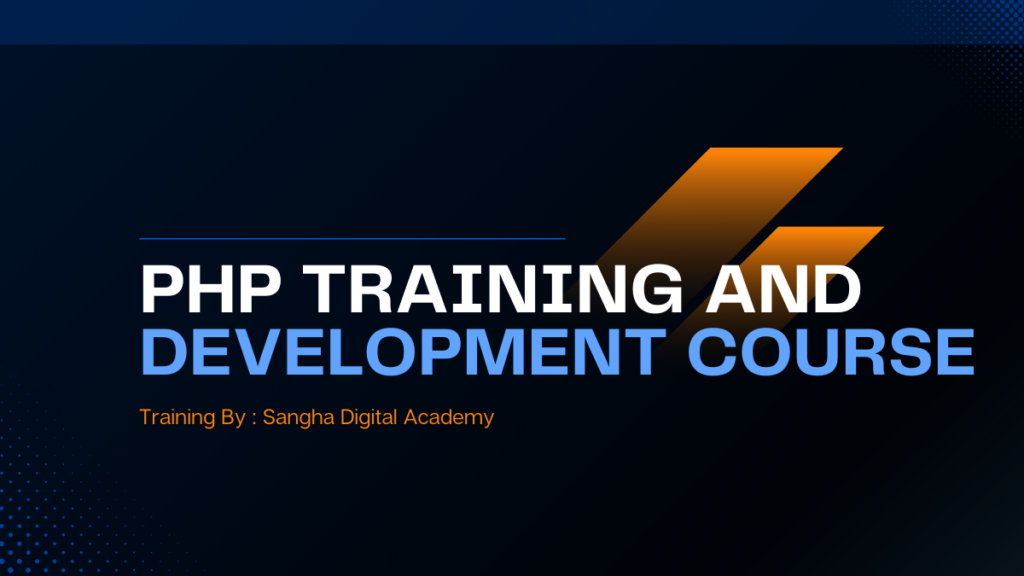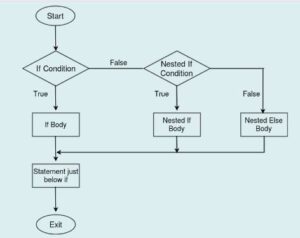
Best PHP Training in Amritsar
At Sangha Digital Academy we provide PHP training, associated frameworks used with PHP, and other complementary languages like HTML/XHTML and CSS 1 and CSS 2.
In web coding, HTML code is often sprinkled with PHP code inside. For instance, when looking up and outputting the current date and time, this might be shown using HTML to display ‘The current time is: ‘. Then, look up the local time using some PHP code. The two in combination produce the desired result. This is the reason that both are taught. CSS code is mainly used to style HTML content and is also useful to include.
Our comprehensive PHP course covers in-depth topics like variable setting, server-side and client-side coding concepts, setting up a web server for home development, looping through a series of instructions, using variables and arrays and manipulating them, working with functions, creating a secure website or application, object-oriented programming, and much more.
Let’s now break down our core modules to give you a better idea of what you’ll study in a PHP course as our student:
What You Learn in PHP Course at Sangha Digital Academy
Intro to the PHP language
Learn what PHP language is and why it’s a server-side language specifically. Understand how a web server and web browser work with PHP code.
Learn how different development environments are installed on Windows, Mac, or Linux. Also, appreciate configuration options to change appropriate settings too. Start your engines!
Hypertext Preprocessor (PHP) 101
PHP 101 is our basic nuts and bolts intro to PHP language. We cover the main programming concepts with a broad brush to introduce the key ideas and topics taught during the remainder of our comprehensive course. Write your first PHP code and see how it works.
HTML/XHTML
HTML and the more modern XHTML language are sent by a web server across the internet to a web browser when visiting a web page. The browser then interprets the HTML code and displays the page for the website visitor. Learn the basics and more to master hand-coding websites or editing them.
CSS 1 & CSS 2
Cascading style sheets (CSS) is being widely used in its 2nd version with a third version gaining acceptance now too. While the information on the web page is provided in HTML/XHTML, CSS is used to style the page. Therefore, a header is given its font family, font size and font style (bold, italics). Master web page presentation in this course.
Using Loops
Looping through an iteration is a useful part of most coding languages. For instance, it’s possible to look through a series of variables that store information.
If there are twenty of them, then a loop can run from 1 to 20 to extract the information and output it to the web page. Loops make it faster to code things that run in a series.
If, Then & Nested Statements
IF-THEN statements are used to check if a certain state is true like a variable has a certain value or it does not. If it does, the ‘THEN’ follow-up is used to act on that result. For instance, an IF-THEN statement can be used to verify if a cookie text file has been previously set suggesting that the website visitor is not new.
After which, the cookie can be read to see what values have been set, look up their details, and greet them by name.
A nested IF-THEN statement has more than one. If one state is found to be true, then a second IF statement is used. Nested statements make it possible to check values or states and run different codes depending on the results discovered.
Variable Arrays
Variables store basic information. Each variable has a different name to identify it. Variable arrays are a little different. They allow the use of a single array name and then specify how many items there are within the array.
This allows looping through 20 records within the array because the array has the same name for its records. Arrays are also useful when extracting information in a series from a relational database like MySQL.
All About String
String variables store characters, numbers, and symbols; not only numbers.
Variables can only store what they are set up to record. Therefore, you cannot take an integer variable that only stores numbers and set a value of ‘Hello’ because it will create an error.
String variables are used to store many different values and working with strings is taught in this module.
What's In Function?
Functions are set blocks of code that can be used again and again. Values can be sent to a function and they can output a value too.
Functions make it possible to create regularly used code blocks to perform certain functions like presenting the date and time in a certain style and then reuse it on multiple pages or websites saving time.
File Management
Accessing files, editing them, and resaving them is a useful tool within PHP. Files can be created as new or deleted when they’re no longer needed. File (and folder) management is covered in this module.
Did Anyone Get The Time?
Working with the date and time is helpful to supply the current time to page visitors, calculate the time difference between today and when the page was updated, or save a record in a database with the relevant date and time.

Object-Oriented Programming
Object-oriented programming (OOP) is about working with objects. OOP involves using objects already shown on the screen or available in the session that can be actively manipulated. Anyone who has coded with Java before will find many of the concepts familiar.
Email Using PHP
Sending emails out can be done using PHP. For instance, when an order is placed, an email could be sent to the website owner to inform them. Different emails can be sent depending on which department is involved when selling different services.
Cookies, Session
When a user visits a website, it creates a new session. Sessions help a website understand how many users are on the site, how long they’ve been present, and track their usage to a degree.
Cookie text files are often created to help identify each user as unique – usually, a unique identifier is used that doesn’t give away their identification – and assist in tracking each user individually. This helps to welcome a new visitor, for instance, but not doing so on every page as if they just arrived again and again.
Despite the EU’s new GDPR policy, cookies are not inherently bad and help websites to function better. They usually do not hold personally identifiable information either, though a database might.
Form Management
When a form is presented on a page using HTML and CSS, it is a static page. It’s dumb and when you hit the SUBMIT button, nothing happens.
It requires PHP to receive the information provided in the form, check it for validity, and take action based on the form. For instance, it could be a contact form that triggers sending a message to the webmaster or it’s an order form that triggers an appropriate response.
Making a Regular Expression
Regular Expressions are a powerful way to parse information to extract just what is needed and leave the rest. It is a form of pattern matching that is highly sophisticated and used heavily to filter through databases of information to locate what is needed.
Working With Images
Images are used in PHP including creating them, adding text to an image, or altering the image. Whilst there are other ways to work with images other than PHP, the idea is to make changes to an image on the server-side without the need for manual intervention.
Adding a brand hologram to an uploaded image is one such use of this technology.
API, URL, GD & XML
APIs let programmers access other web site and their databases, with permission. XML is useful for standardizing information sharing. Both website URLs and GD are also covered in this module. This one is more advanced and useful for serious programmers.
Working With Networks
Dealing with network connections to databases and other physical networks is covered in this module.
It’s not always possible to connect to a database or access computer resources within a data hub, so this module covers how that happens and what to do when running into problems.
Javascript 101
Javascript 101 discusses the Javascript (JS) language. JS runs on the client-side within the web browser.
Unlike a static HTML web page, JS allows for interactive events to get triggered based on user interaction. JS includes looping, functions, mouse events, and validation of code.
Fancy AJAX
AJAX is a form of JS that responds directly to the page. For instance, with a web form, instead of submitting an incomplete contact form and processing the missing information through a PHP page, AJAX can scan the details and refuse the form submission with a prompt about what information is missing.
AJAX makes sites more useful and reduces the use of server-side resources.
All About jQuery
jQuery is one of the latest things to happen to JS. It is a Javascript library that can be called to execute common tasks instead of having to write the JS code line by line to complete the task.
Using jQuery cuts down on JS development time. Think of it like functions on steroids. There are many JS libraries that you can use, but jQuery has become one of the most popular ones to know.
FTP & WHM
File transfer protocols (and SFTP and SSH for secure access) are ways to log into a web server over the internet. Files can then be copied back and forth or deleted, as needed. We also cover the Web Hosting Manager (WHM) because our students find they use it to manage web host files too.
We’re welcoming new students to our next PHP training course in Amritsar. Get in touch & Call 805-443-4436 to reserve your spot before they all get booked up.

